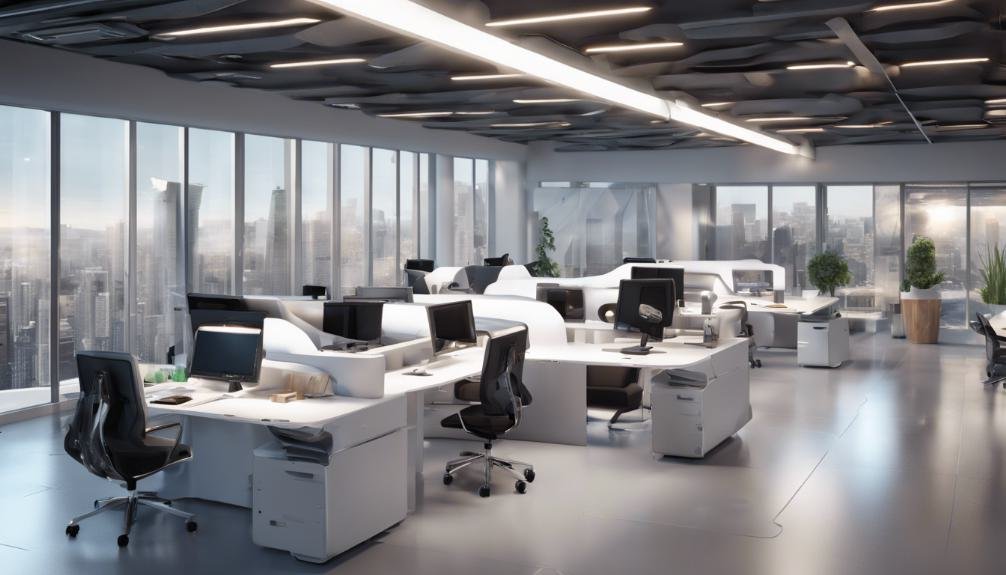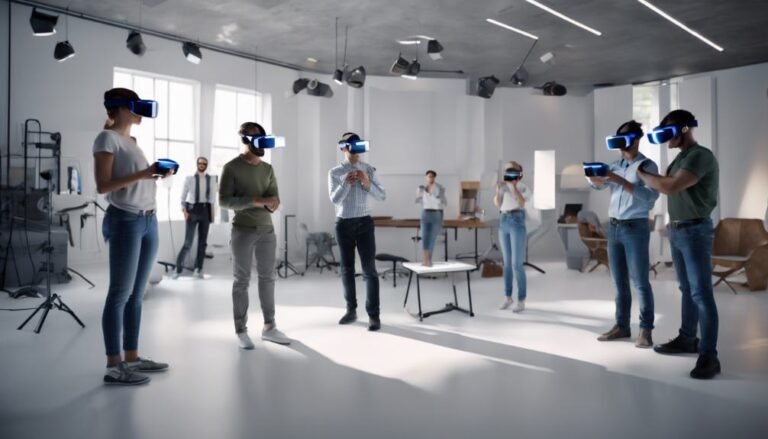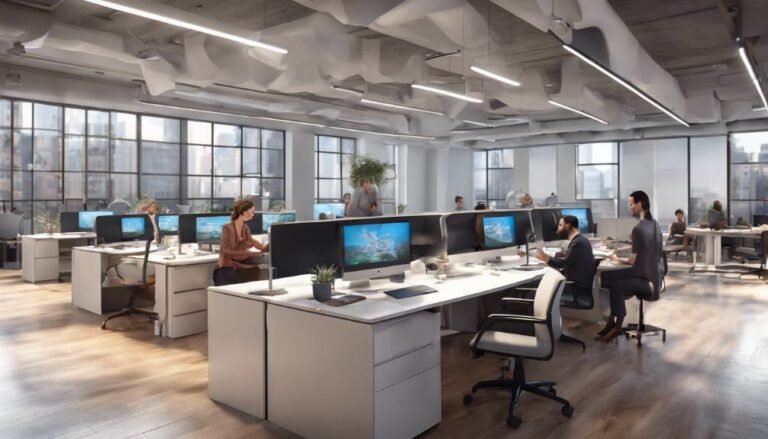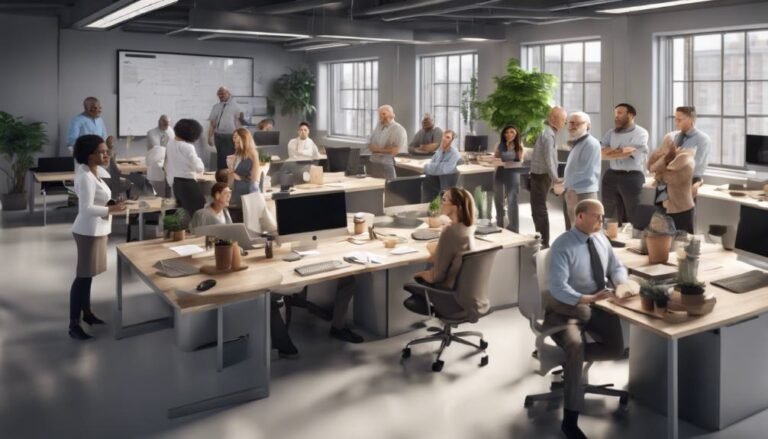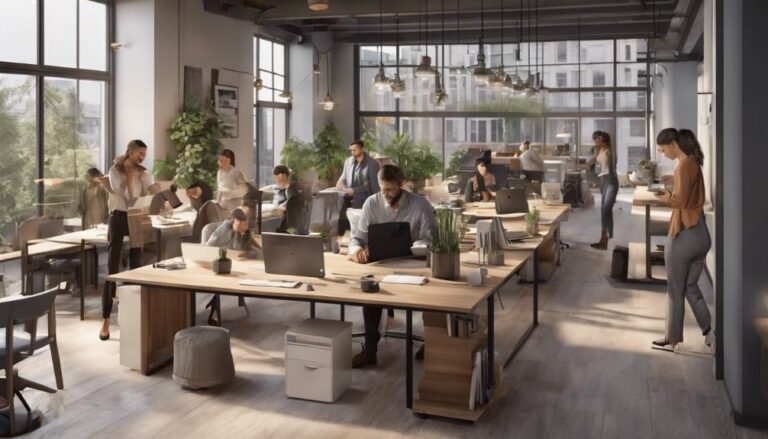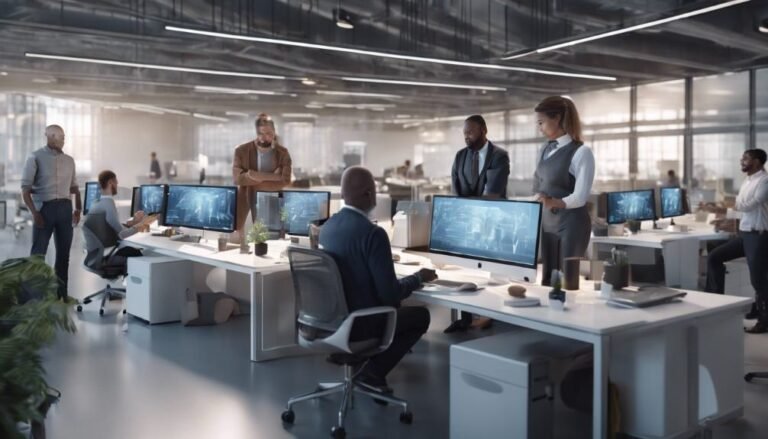Human-Centered Design in the Future Workplace: Putting People First
In the future workplace, embracing human-centered design puts people first. By focusing on end users' needs, you create a user-centric environment. Prioritizing user experience drives innovation and resonates with users. Design with empathy, listen actively, and design solutions that enhance interactions. Employee-centric workspaces boost well-being with flexible furniture and collaborative spaces. Wellness programs and work-life balance strategies increase satisfaction. Utilize technology to empower employees with seamless communication and skill development tools. Embrace change, foster a culture that prioritizes people, and promote adaptability. Discover how these strategies shape a successful and sustainable workplace.
Key Takeaways
- Prioritize user experience above all else for human-centered workplace design.
- Design innovative solutions that resonate with employees' needs and preferences.
- Create employee-centric workspaces that enhance comfort and productivity.
- Implement wellness programs and mental health initiatives for employee well-being.
- Embrace technology to empower employees with flexible work solutions and collaboration tools.
Understanding Human-Centered Design Principles
To truly grasp the essence of human-centered design principles, imagine putting yourself in the shoes of the end user, understanding their needs and desires at a fundamental level. User experience lies at the core of this concept, where every decision is made with the end user in mind. It's about creating solutions that not only function well but also resonate with the people who'll use them daily. Having an innovation mindset is pivotal in this process. It's about thinking outside the box, pushing boundaries, and constantly seeking ways to improve and enhance the user's interaction with the product or space.
When you approach design with a user-centric viewpoint, you open up a world of possibilities. It's about empathy, actively listening to what users truly need, and designing solutions that address those needs effectively. An innovation mindset allows you to break free from traditional constraints and envision unique ways to elevate the user experience. By embracing human-centered design principles, you pave the way for creating impactful and meaningful solutions that truly make a difference in people's lives.
Implementing Employee-Centric Workspaces
Imagine walking into a workspace that has been meticulously designed to cater to your every need and enhance your experience throughout the day. By implementing employee-centric workspaces, companies are recognizing the importance of putting their employees' well-being at the forefront. One key aspect of these workspaces is the use of flexible furniture that adapts to your preferences and work style, promoting comfort and productivity. Additionally, creating collaborative environments where employees can easily interact and share ideas fosters creativity and teamwork.
Here is a table highlighting the benefits of employee-centric workspaces:
| Benefits | Description |
|---|---|
| Enhanced Productivity | Flexible furniture boosts focus and efficiency. |
| Improved Collaboration | Collaborative environments encourage teamwork and idea sharing. |
| Better Employee Satisfaction | Employee-centric workspaces increase overall well-being and job satisfaction. |
Enhancing Employee Well-Being Strategies
Enhance your workplace well-being through innovative strategies that prioritize employee health and happiness. Investing in wellness programs can greatly boost employee morale and productivity. By offering activities like yoga classes, meditation sessions, or healthy cooking workshops, you can help your team members reduce stress and improve their overall well-being.
Additionally, implementing mental health initiatives such as counseling services or destigmatizing conversations around mental health can create a supportive environment where employees feel comfortable seeking help when needed.
Encouraging work-life balance is another vital aspect of enhancing employee well-being. Providing flexible work hours, remote work options, or designated break areas can help your employees recharge and prevent burnout. Remember, a healthy work environment isn't just about physical health but also about mental and emotional well-being.
Empowering Employees Through Technology
Empower your team members by integrating cutting-edge technology solutions that streamline workflows and enhance collaboration in the workplace. Technology integration can revolutionize how your employees work, fostering a more empowered and efficient environment.
Here are some key ways to leverage technology for employee empowerment:
- Cloud-Based Collaboration Tools: Enable real-time communication and seamless collaboration, breaking down barriers between team members.
- Mobile Work Solutions: Allow flexibility and remote work options, empowering employees to work in a way that suits their lifestyles.
- AI-Powered Analytics: Provide insights into performance and areas for improvement, empowering individuals to make data-driven decisions.
- Virtual Reality Training: Enhance learning experiences and skill development, empowering employees to upskill in an immersive environment.
Embracing Change for a People-First Culture
To cultivate a people-first culture, embrace change as a constant opportunity for growth and evolution within your workplace community. Change management plays an important role in fostering a cultural shift towards prioritizing people. By implementing effective employee engagement and communication strategies, you can navigate changes smoothly and make sure that your team feels supported throughout the process.
| Change Management | Employee Engagement | Communication Strategies |
|---|---|---|
| Encourage open dialogue | Foster a sense of belonging | Utilize various channels for communication |
| Provide training and resources | Recognize and reward contributions | Be transparent and honest in messaging |
| Create a culture of adaptability | Solicit feedback and act on it | Share the 'why' behind changes |
Conclusion
To sum up, when it comes to designing the future workplace, remember to always put people first. By embracing human-centered design principles, creating employee-centric workspaces, prioritizing well-being strategies, leveraging technology, and fostering a people-first culture, you can guarantee that your team feels valued and supported.
Remember, 'you can't judge a book by its cover' – prioritize the needs and experiences of your employees to create a thriving and successful workplace for all.

